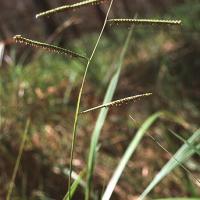Kodo millet
Paspalum scrobiculatum
Paspalum scrobiculatum, commonly known as kodo millet, is a type of millet that belongs to the Poaceae family. It is native to India and is cultivated as a food crop in various parts of Asia and Africa. Kodo millet is known for its nutritional value and is used in traditional cuisines as a cereal grain. Here is a description of Paspalum scrobiculatum:
Appearance:
- Kodo millet is an annual grass that typically grows to heights of 90 to 150 cm (35 to 60 inches).
- The leaves are long and linear, and the plant forms inflorescences or seed heads at the top of the stems.
- The seeds are small and round, with a range of colors, including white, brown, and black.
Culinary Uses:
- Kodo millet is a staple in traditional diets in various regions of India and some parts of Africa.
- The millet grains are used to prepare various dishes, including porridge, roti (flatbread), and dosa (a type of pancake).
- It is known for its nutty flavor and is often used as a rice or wheat substitute in gluten-free diets.
Nutritional Value:
- Kodo millet is rich in nutrients, including dietary fiber, protein, and minerals like iron and calcium.
- It is considered a nutritious food source and is valued for its health benefits.
Cultivation:
- Kodo millet is drought-tolerant and can grow in poor soils, making it suitable for cultivation in regions with challenging agricultural conditions.
- It is typically sown during the rainy season and can be grown as a rain-fed crop.
Health Benefits:
- The consumption of kodo millet is associated with various health benefits, including its role in managing diabetes, reducing cholesterol levels, and promoting digestion.
Kodo millet, or Paspalum scrobiculatum, is a nutritious and versatile cereal grain that has been a part of traditional diets in certain regions for centuries. It is valued for its adaptability to challenging growing conditions and its role in providing food security in areas prone to drought or limited water resources.






